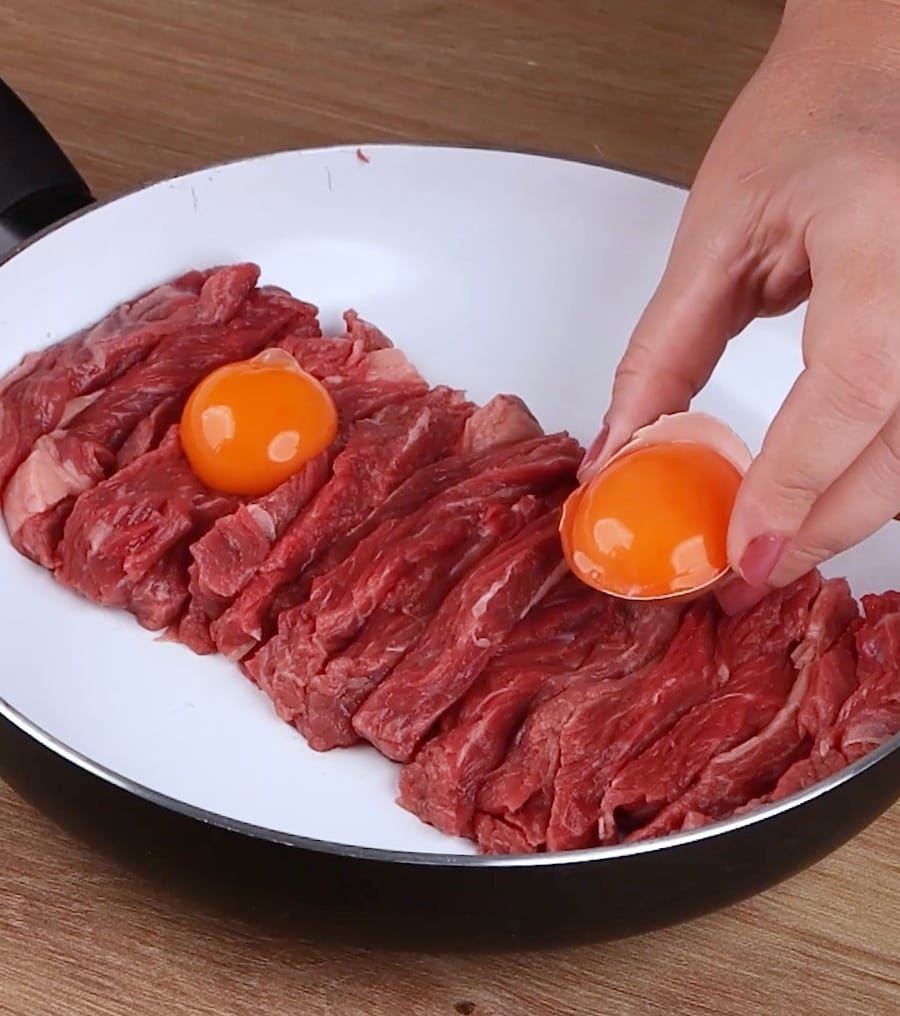ADVERTISEMENT
#### Instructions:
1. **Slice the Meat**: Start by cutting the meat into thin, bite-sized pieces or strips. Thin cuts will absorb the baking soda more effectively and cook faster.
2. **Sprinkle Baking Soda**: Sprinkle the baking soda evenly over the surface of the meat. Use about **1/2 teaspoon of baking soda per pound** of meat. Massage the baking soda gently into the meat to ensure that it’s evenly coated.
3. **Let It Rest**: Allow the meat to rest for **5 minutes**. This gives the baking soda time to work its magic and begin breaking down the proteins.
4. **Rinse the Meat**: After the meat has rested, rinse it thoroughly under cold water to remove any excess baking soda. This is important, as you don’t want the meat to have a bitter taste from the baking soda.
5. **Pat Dry**: Use a paper towel to pat the meat dry. This will help it sear better during cooking and prevent it from becoming soggy.
6. **Cook as Usual**: Now, the meat is ready to be cooked as you normally would. Whether you’re stir-frying, grilling, or slow-cooking, the meat will be incredibly tender and juicy!
### How Long Should You Let the Baking Soda Sit?
The beauty of this technique is its speed. **Five minutes** is generally enough time for the baking soda to work on the meat. However, if you’re working with a particularly tough cut, you can let it sit a little longer (up to 10 minutes), but don’t leave it too long, as the meat might become overly soft.
### Which Meats Can You Use This Method On?
The baking soda technique works on **any meat**—beef, pork, chicken, or lamb. It’s particularly helpful for tougher cuts of meat that are typically slow-cooked or braised, like flank steak, skirt steak, or stew meat. These cuts can be turned into tender, juicy bites when treated with baking soda.
Some common meat options that benefit from this method include:
– **Beef**: Cuts like flank steak, chuck roast, and round steak.
– **Pork**: Pork shoulder or pork chops.
– **Chicken**: Chicken breasts or thighs, especially if they’re boneless and skinless.
– **Lamb**: Lamb shoulder or leg of lamb, which can be tough if not cooked correctly.
### Tips for Using Baking Soda to Tenderize Meat
1. **Use sparingly**: Only use a small amount of baking soda—about **1/2 teaspoon per pound of meat**. Too much can affect the taste and texture of the meat.
2. **Rinse well**: After the meat has rested with the baking soda, make sure to rinse it thoroughly. Otherwise, the taste of baking soda can linger, and it may affect the flavor of your dish.
3. **Avoid using it for too long**: The longer you let the baking soda sit, the more the meat’s texture may change, becoming overly soft or mushy. Stick to the 5-minute rule to get the best results.
4. **Don’t skip rinsing and drying**: Rinsing the meat well and patting it dry before cooking is crucial. It prevents any residual baking soda from altering the taste and ensures that your meat sears properly.
### Chinese Recipes That Benefit from Tenderizing Meat
This technique is commonly used in Chinese stir-fries and other quick-cook dishes. Here are a few popular Chinese recipes where baking soda-tenderized meat will elevate the dish:
– **Beef with Broccoli**: Tender strips of beef stir-fried with broccoli in a savory sauce. Using tenderized beef ensures it stays juicy and melts in your mouth.
– **Kung Pao Chicken**: Chicken pieces are cooked with peanuts and vegetables in a spicy, tangy sauce. Tender chicken is key to a satisfying bite.
– **Orange Chicken**: Crispy chicken pieces coated in a sweet and sour orange sauce. Baking soda ensures the chicken remains tender even after frying.
– **Szechuan Pork**: Spicy and savory stir-fried pork with vegetables. Tender pork means each bite is bursting with flavor.
### The Benefits of Tenderizing Meat with Baking Soda
1. **Improved Texture**: Meat becomes softer, juicier, and more tender, even when using less expensive or tougher cuts.
2. **Quick and Easy**: This technique only takes a few minutes, making it a convenient option for busy weeknights.
3. **Retains Juiciness**: Baking soda helps lock in moisture, preventing the meat from drying out during cooking.
### Conclusion
The **Chinese secret to tenderizing meat**—using baking soda—is a simple yet effective method that will transform your cooking. By tenderizing even the toughest cuts of beef, pork, or chicken in just five minutes, you can create delicious, melt-in-your-mouth dishes without spending hours in the kitchen. Whether you’re making stir-fries, stews, or grilling meats, this technique will ensure your meat is always juicy, tender, and flavorful. Give it a try next time you’re cooking and discover how this easy trick can take your meals to the next level!
ADVERTISEMENT
